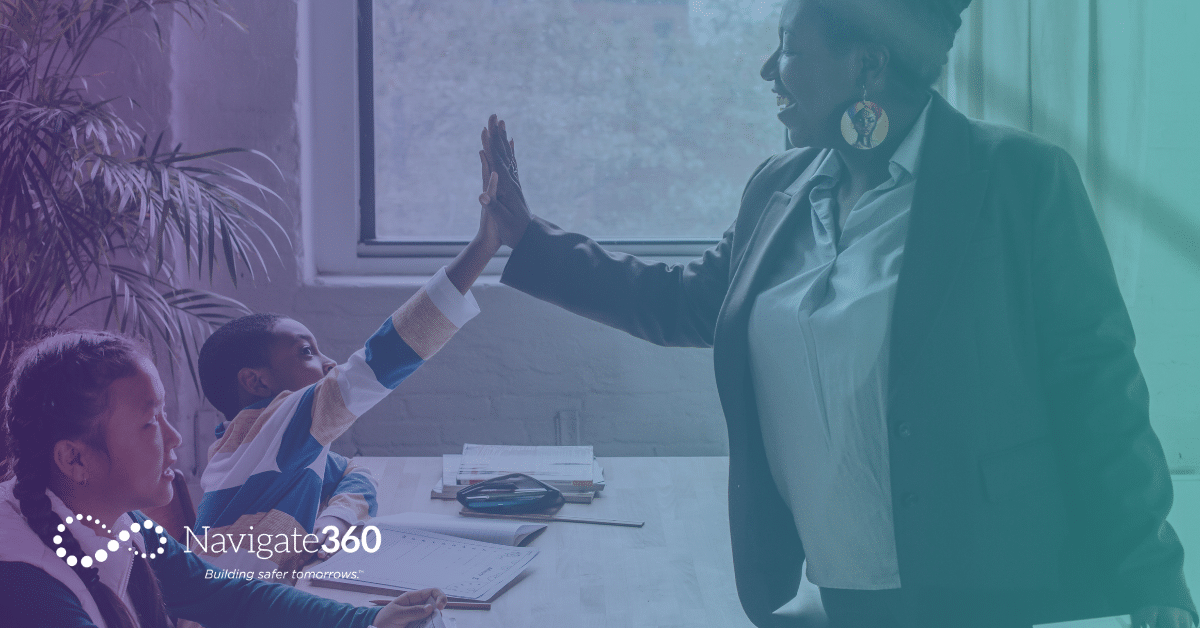In schools using a Multi-Tiered System of Support (MTSS) framework, individual tiers serve specific student populations, both academically and behaviorally. As part of MTSS, Positive Behavior Interventions and Supports (PBIS) offers three tiers of support designed to promote positive behaviors schoolwide. Tier 1 supports all students, and up to 85% of these students remain in Tier 1 throughout the school year. For students who need additional behavioral support beyond the universal supports of Tier 1, there is Tier 2 behavior interventions.
Turn Discipline into Learning Opportunities
Learn more about PBIS Rewards and Suite360 Behavior Intervention in this on-demand webinar!
Tier 2 provides intervention and support for up to 15% of students who need additional help in developing positive behaviors. In this tier, interventions include increased instruction, supervision, positive reinforcements, academic support, pre-corrections, and focus on finding the function of the behavior.
For these students, Tier 1 has proven to be a challenge. There can be numerous reasons for this, including academic difficulties, personal or family issues, developmental lags, and more. In identifying students for placement in Tier 2, educators must seek answers to two key questions about a student’s behavior:
- What is the source of this behavior?
- What purpose does the behavior serve?
Determining motivation for a student’s behavior enables a school to place them into proper interventions in a Tier 2 environment.
Tier 2 Behavior Interventions Examples
Tier 2 interventions serve a subset of the student population that needs additional support beyond Tier 1. These interventions are often delivered in a group-style format. They align with the expectations outlined in the schoolwide matrix and serve as a means by which students can develop positive behavioral habits and progress back into Tier 1. Tier 2 behavior interventions include:
- Check-In/Check-Out (CICO) – Students meet with a coach to develop behavior goals. Their teachers assess their progress in these areas at the end of each class period. CICO students meet with their coaches at the beginning (check-in) and end (check-out) of each day.
- Social skills development – This can include assigning classroom jobs, role-playing social situations, or reading stories that teach social skills.
- Structured breaks – Students can benefit from breaks that incorporate physical activity, mindfulness exercises, or sensory activities.
- Home/School behavior plan – Involving the family in their student’s Tier 2 interventions can extend skills development beyond the classroom. Extending behavioral goals to the home enables the family to work together with their student to cement their progress.
- Academic support –Tutoring, adapting assignments for learning needs, and providing accommodations for testing or note-taking can help students to build academic confidence.
- Self-management skills development – This can include strategies such as organizational skills, task lists, time management logs, and flexible seating to minimize distractions.
It’s important to note that Tier 2 behavior intervention supports should complement classroom management practices and not place an undue burden on staff. However, the targeted behavior interventions of Tier 2 may require additional effort and increased adult supervision pursuant to the goal of returning students to Tier 1. Interventions in Tier 2 are not meant to be long-term or permanent.
Using PBIS Rewards in Tier 2 Behavior Intervention
Schools using a PBIS framework will be able to identify a subset of students who have trouble meeting the goals of Tier 1 expectations schoolwide. Many of these students need intensive support for a short period of time in order to catch up to their classmates in Tier 1. Additionally, linking recognition to the progress they make while in Tier 2 can help solidify the gains they achieve.
Tier 2 supports should align with schoolwide expectations. PBIS Rewards can help you to track student progress as it relates to your behavior matrix. The software includes a Check-In/Check-Out feature that schools can use to manage students in Tier 2, with configurable goals and digital tracking. In addition, the software includes a social-emotional logging feature called SEL/Status Check. This feature enables schools to help students develop self-awareness and self-management skills.
A PBIS initiative can profoundly impact school culture by changing the focus of discipline and placing emphasis on positive behavior. Supporting Tier 2 is easier with PBIS Rewards because it enables a school to track the progress students make as they develop appropriate behavioral skills. In fact, supporting EVERY student in a PBIS initiative can be as simple as Reward – Track – Redeem!
We’d love to show you how to support students in Tier 2 with PBIS Rewards. Just contact us for more information!




